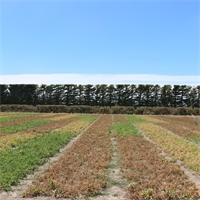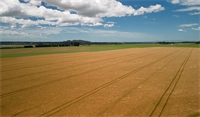28May
Nutrient duo for flourishing pasture
Words supplied by Ballance Agri-Nutrients
“Spring pasture needs both nitrogen and sulphur. A sulphur deficit limits nitrogen uptake, and therefore the response to nitrogen fertiliser,” says Ballance Agri-Nutrients Science Extension Officer Aimee Dawson.
But how can farmers best ensure these nutrients are available for spring pasture to use?
Best time for nitrogen
“Spring, when pasture growth rate peaks, is also typically when nitrogen application response rates (amount of pasture grown in kg DM/ha per kg N/ha applied) are the highest,” says Aimee. Spring response rates might be two to three times higher than in autumn, dependent on location, soil temperature and soil moisture.
Typical nitrogen application response rates at different times
|
|
Typical response rates* (kg DM/ha per kg N/ha)
|
|
Mid to late spring
|
15 - 20
|
|
Autumn
|
5 - 10
|
|
Early winter
|
4 - 8
|
|
Late winter to early spring
|
10 - 15
|
*Rates depend on location, soil temperature and soil moisture.
Nitrogen application response rates are lowest in winter. This is because pasture growth slows down as soil temperatures fall. Any nitrogen applied during winter, or not fully utilised prior to it, is susceptible to leaching during high rainfall periods.
“It can still be effective to apply nitrogen in late winter, early spring or autumn,” says Aimee. “However, monitor the soil temperature during this time to ensure it’s adequate. You want the soil temperature to be 6 °C and rising at 9.00 am to get a response from nitrogen fertiliser.”
Apply sulphur in autumn
Plant-available sulphate sulphur is often lacking in early spring. Over cold, wet winter conditions, sulphate sulphur leaches from the soil similarly to nitrogen, and the bacterial production of sulphate sulphur from organic or elemental sulphur slows down.
“Autumn is a good time to apply elemental sulphur, as it doesn’t leach and sits in the soil over winter, ready to meet spring pasture’s sulphur requirements.” As soil temperatures warm up, soil bacteria become more active and gradually convert elemental sulphur into sulphate sulphur. Elemental sulphur continues to provide a slow drip of sulphur over the season.
Options to consider
When considering products, keep in mind why and when the nutrients are needed and applied. For autumn application, PhaSedN, containing elemental sulphur and nitrogen (as SustaiN), is ideal. A good late winter to early spring option to address short and medium-to-long term sulphur needs is PhaSedN Quick Start. It combines PhaSedN with sulphate of ammonia and provides both elemental and sulphate sulphur. If elemental sulphur is not required, then the SustaiN Ammo range is a good option.
Nitrogen and sulphur content of fertilisers
|
Product
|
Nitrogen %
|
Sulphur %
|
|
Elemental
|
Sulphate
|
|
PhaSedN
|
25
|
29
|
0
|
|
PhaSedN Quick Start
|
31
|
12
|
5
|
|
Sustain Ammo 30
|
30
|
0
|
13
|
|
Sustain Ammo 36
|
35
|
0
|
9
|
For more support, talk to your Ruralco Representative.
Related

Empowered by a desire to leave the dairy industry better than they found it, Carew dairy farmers and...
Read More

One of the many things that New Zealand arable farmers do very, very well, is adapting to change. Ne...
Read More

How you react to challenges has a huge impact on how well you manage the ups and downs of farming, s...
Read More

Now is the opportune time for farmers who are looking to secure their future energy, lower costs, an...
Read More

With four children, three farms and a career in politics spanning 25 years, the Rt Hon David Carter ...
Read More

Look back and plan ahead to get the most from your autumn sown cereal crops.
Read More